Minority language media and the COVID-19 pandemic – the case of Irish. An interview with Dr. John Walsh.
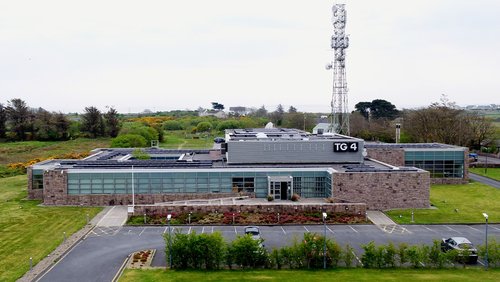
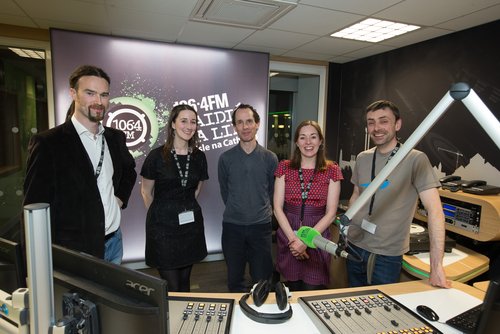
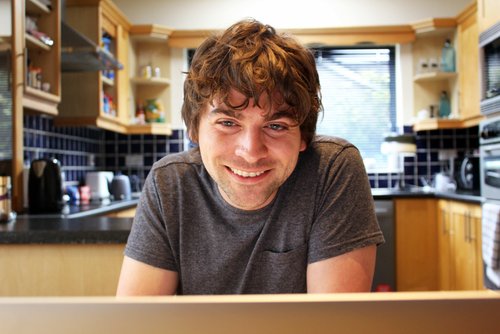
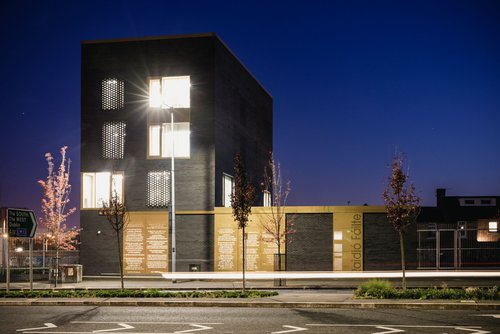
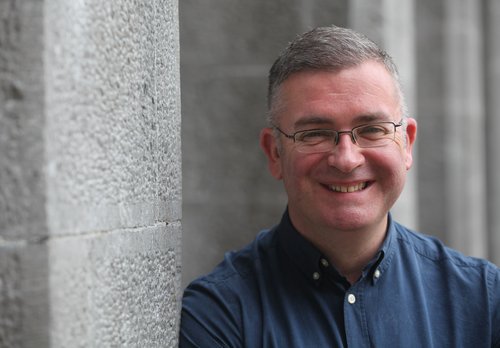
A series edited and conceptualised by Dr. Sergiusz Bober and Craig Willis.
We return to the Celtic linguistic sphere for our fourth post on the situation of minority language media (MLM) during the ongoing COVID-19 pandemic. Dr. John Walsh, Senior Lecturer in Irish at the National University of Ireland in Galway, details the case of Irish language media on the island of Ireland. His analysis shows that whilst audience numbers increased across many forms of media, there was a mixed effect on content. On the one hand, a lack of official governmental information concerning the pandemic in Irish is particularly striking, alongside the obvious absence of live coverage of sports and cultural events resulting in significantly decreased availability of content. On the other hand, a response of MLM to these challenges has not always been entirely successful or rapid. For example, educational needs of children were ultimately addressed albeit with a delay, while pandemic-related issues have not always been thoroughly discussed due to limitations of scheduling.
Dr. Walsh begins by comprehensively outlining the various TV, radio, print and social media which operate in the Irish language, as well as a brief history of their development.
As an introduction, could you please summarise the minority language media (MLM) situation in your linguistic sphere?
The Irish language is used to varying degrees in media in the Republic of Ireland and Northern Ireland, although there are important distinctions between the two jurisdictions. The promotion of Irish has been the policy of the Irish state since its foundation in 1922 and that is reflected to an extent in media policy. In Northern Ireland, however, the local political situation dictates that Irish language media is more contentious and the sector did not emerge to any significant extent until the 1980s.
In the audiovisual media, the dedicated MLM outlets are the radio station RTÉ Raidió na Gaeltachta and the television station TG4. Both emerged from civil society campaigns in favour of Irish language media, following the failure of the state broadcaster RTÉ (Raidió Teilifís Éireann) to provide adequate Irish language content.
The main aim of Raidió na Gaeltachta, established in 1972, is to serve the Gaeltacht (Irish speaking districts), scattered pockets of territory where Irish remains the community language to varying extents. Initially a part-time, local AM service for the Gaeltacht, Raidió na Gaeltachta was made available on FM nationally from 1975. Day-long broadcasting was introduced in 1986 and the station now broadcasts around the clock entirely in Irish. The focus is predominantly on local speech content from the different Gaeltacht regions and on traditional music. RTÉ Raidió na Gaeltachta is available throughout the Republic of Ireland on FM, and overspill can be received in parts of Northern Ireland. It is also available in DAB in parts of the Republic and online everywhere. It is a non-commercial service and is therefore not included in the JNLR (Joint National Listenership Research) project conducted on behalf of the Irish radio industry. However, listenership is thought to be very low nationally, at less than one percent.
The television service TG4 broadcasts a majority of its content in Irish but has a sizeable output in English. It was established as Teilifís na Gaeilge (TnaG) in 1996, again under the auspices of RTÉ. Since the Broadcasting Act of 2007, it has been an independent public service broadcaster with a specific remit to broadcast Irish language programming and content related to Irish culture. TG4 is available throughout the Republic of Ireland on the free-to-air platform Saorview as well as other commercial platforms. Under the 1998 ‘Good Friday’ agreement, the British and Irish governments committed to ensuring the widespread availability of TG4 in Northern Ireland. It is currently available there on Freeview as well as on commercial platforms. The station can be received worldwide via its own app and player. In 2019, it increased its position to the sixth-most watched television station in Ireland but remains slightly under two percent in terms of share. TG4 also operates other platforms such as BLOC (short-form content aimed at young viewers), Molscéal (short-form content aimed at the core Irish-speaking community), TG4 Foghlaim (an educational service aimed at learners) and CINE4 (an Irish language film initiative).
RTÉ is the most important player in terms of Irish language media, as it is responsible for RTÉ Raidió na Gaeltachta and is obliged to provide one hour’s programming per day to TG4, including its news service. However, RTÉ’s other radio and television channels broadcast only a small amount of Irish. A study of all radio stations in Ireland operating in English found that RTÉ radio stations other than Raidió na Gaeltachta broadcast two percent or less in Irish. Output in Irish on RTÉ’s two television channels is also very low but has been increased recently following an investigation by the Irish language commissioner, An Coimisinéir Teanga. RTÉ has an Irish language website where multimedia content is shared daily.
In addition, there are two full-time Irish language community radio stations, Raidió na Life and Raidió Fáilte, covering Dublin and Belfast respectively. Both operate with a small core paid staff and a large number of volunteers. A daily 30-minute Irish language programme is broadcast on BBC Radio Ulster and there are occasional Irish language programmes on BBC Two Northern Ireland. Irish language radio content is available on BBC Sounds and on a dedicated Irish language website BBC Gaeilge.
Irish language output on the Republic’s other 54 commercial and community radio stations is minimal, an average of two percent or less of weekly output. Although all television broadcasters are obliged by the Broadcasting Act to have ‘special regard’ for the Irish language, there is no Irish language content on the three commercial channels operated by Virgin Media Television.
Outside the audiovisual sector, the main player in the Irish language media is the online news service Tuairisc.ie, set up in 2015. Tuairisc.ie provides a daily service of news, current affairs, sport, culture and lifestyle features. Another online service, Nós, focuses on lifestyle and culture. A monthly journal, Comhar, covers current affairs, literature and culture and is available in print format and online via subscription. All are funded by the national language planning agency Foras na Gaeilge. Another monthly journal, Feasta, is published by the main voluntary language body Conradh na Gaeilge but does not have an online presence. Irish is used extensively on social media, including Twitter and the active ‘Gaeilge Amháin’ (‘Irish Only’) group on Facebook, which has over 13,500 members. There is also activity on other platforms including Instagram, Twitch and TikTok. The Vietnamese-born Irish speaker Úna-Minh Kavanagh, who grew up speaking Irish in Co. Kerry, shares creative Irish language content on Twitter, Twitch and YouTube and has used these platforms for high-profile anti-racism campaigns.
How has the COVID-19 pandemic affected the reporting of the MLM in your area and has there been any effect on readership / viewing figures?
Along with all other sectors of society, Irish language media had to adapt suddenly to life under COVID-19 and, as an essential service, the sector was obliged to continue operating. Broadcasters at RTÉ Raidió na Gaeltachta switched to remote working for the most part, presenting programmes and news bulletins from their homes and linking directly to the studio. The core schedule was unaltered, although COVID-19 became the dominant item on news and current affairs programmes, local or national. Presenters of music programmes were asked not to dwell on the pandemic and to encourage listeners to send in requests in order to keep in touch with friends and family. The season of the lunchtime news programme Nuacht a hAon and the weekend current affairs programme An tSeachtain was extended by a month to report on breaking developments.
TG4 does not have a regular live chat/lifestyle programme and therefore was slow in adapting its daily programming to COVID-19. A month after RTÉ, it introduced Cúla4 Ar Scoil aimed at children who could not attend school. This was following in the summer period by Campaí Cúla4, a morning programme for children of school-going age. Two new chat shows were commissioned, Hector Anseo, presented by well-known personality Hector Ó hEochagáin from his garden shed, and Daniel sa Bhaile, presented by popular singer Daniel O’Donnell from his home, but both were largely in English with some contributions in Irish. The station also produced Meitheal na mBan, a series in conjunction with women musicians on its YouTube channel in order to raise money for the charity Women’s Aid and the COVID-themed short drama series Le Ceangal which was broadcast on its BLOC platform. The weekly current affairs series 7 Lá is provided by RTÉ to TG4, as is the daily news service Nuacht TG4, and both programmes adapted immediately to covering the pandemic.
Tuairisc.ie also reported on the pandemic daily, initiating a new series called ‘An Cultúr faoin gCuibhriú’ (Culture under Lockdown) featuring interviews with those involved in the cultural industries. It also discussed the developing terminology in Irish in relation to COVID-19. Nós published regular articles about the crisis, focusing on cultural and social aspects. Comhar published a special enlarged literary edition in April 2020 to allow deeper engagement with the implications of COVID-19. Normally available behind a paywall or by subscription only, it made the special edition available free to all on a once-off basis on its website. Raidió na Life aired a new series of podcasts about life under lockdown and broadcast daily updates on COVID-19 cases. Raidió Fáilte continued to broadcast a live daily news programme from its studio and endeavoured to show the diversity of the experiences of Irish speakers at home and abroad of the pandemic.
As RTÉ Raidió na Gaeltachta does not measure its FM audience, no quantitative data is available about change in linear listenership since the pandemic began but the station reported an increase in the numbers live-streaming its service. TG4 maintained its position as the country’s sixth most watched television station during spring 2020 and recorded a three-fold increase in traffic on the TG4 Player during the first three months of the pandemic. It also reported that its children’s programme Cúla4 Ar Scoil was the second most watched in the country with an average 8 percent share for that time slot and said that there was a four-fold increase in viewers of children’s programmes on the TG4 Player. Both Tuairisc.ie and Nós reported large increases in traffic to their websites and Comhar recorded a 15 percent increase in subscribers.
The financial implications for Irish language media are not yet clear. There is a long-standing dispute between the online/print media sector and Foras na Gaeilge over funding and a plan to overhaul the financial basis of the sector was shelved in 2019. RTÉ, already under serious financial pressure, expects a further drop in revenue of between 25 and 35 percent as a result of the pandemic, which puts pressure on its ability to support Irish language services. Before COVID-19, TG4 regularly pointed to its own precarious financial position. In the 2019 budget, the government gave an additional €1m to TG4 but the station reported a cumulative gap of almost €10m in its funding.
How has the lockdown / social distancing measures affected other covered content in MLM?
Sport is a mainstay of Irish media, with particular attention being paid to hurling and Gaelic football. There was serious disruption to sports coverage on all media, especially live coverage of fixtures on TG4 and Raidió na Gaeltachta, all of which were cancelled in March 2020. TG4 revived its All Ireland Gold series, archive recordings of Gaelic football and hurling matches, although commentary was mostly in English. It also rebroadcast archive rugby, soccer and ladies’ Gaelic football in Rugbaí Gold, Sacar Gold and Peil na mBan Gold. Its twice-weekly soap opera Ros na Rún had finished production so broadcasts were not disrupted, but its autumn 2020 season will be delayed and instead special programmes based on the highlights surrounding popular characters will be shown. Work on CINE4, the station’s Irish language film initiative, in association with the Irish Film Board and the Broadcasting Authority of Ireland, was also delayed. Screen Producers Ireland, which represents all independent television production companies including those working for TG4, said that 88 percent of respondents had to delay productions due to COVID-19. In response to the crisis, TG4 announced €3m of what it called ‘solidarity measures’ to support the independent television sector.
RTÉ Raidió na Gaeltachta’s extensive weekend sports coverage was reduced by 80 percent and replaced by music programming and its weekday sports bulletins were suspended. The station has a large archive and rebroadcast more historical material than normal, particularly in its summer schedule. Raidió na Life had to stop work on commissioned programming, mostly under the Sound and Vision scheme. Large sporting and cultural festivals such as the Gaeltacht football championship Comórtas Peile na Gaeltachta and the Irish language Oireachtas na Gaeilge festival have also been cancelled. These are normally covered extensively by Irish language media and will leave large gaps in schedules. Online and print media introduced sections dedicated to COVID-19 coverage, with obvious implications for the space that they could devote to other content.
How has MLM covered issues of majority-minority relations and has the situation or voice of minorities been covered in majority media?
The issue of majority-minority relations is complex in Ireland where many Irish speakers lack a strong sense of being a distinct minority. As a large minority (40%) of the population in the Republic claims knowledge of Irish but is unable to use the language actively, the boundaries between speakers and non-speakers can be fuzzy. This uncertainty is particularly salient in the case of TG4, which aims to cater for a range of viewers spanning people with limited competence in Irish to fluent/native speakers. Nevertheless, there is consistent coverage in Irish language media of the minoritisation of the language and regular discussion of the existential threat to its future as a community language. Once weekly, Nuacht TG4 rebroadcasts a news report from the Scottish Gaelic television service BBC Alba, and RTÉ Raidió na Gaeltachta broadcasts a weekly programme Sruth na Maoile in association with the Scottish Gaelic radio station BBC Radio nan Gaidheal, with each presenter speaking his or her own variety of Gaelic. Online media such as Tuairisc.ie and Nós regularly cover news related to other minority language communities.
The minoritised status of Irish in the media became even more apparent during COVID-19 as there is no statutory obligation on the government to advertise public health information in Irish, with a result that virtually all such announcements were made in English only. Irish language versions of public health advertisements were largely absent from TG4 and RTÉ Raidió na Gaeltachta. The latter created its own version of the guidelines voiced by its presenters from different Gaeltacht regions, emphasising the fact that RTÉ Raidió na Gaeltachta was there to help the community. Pictures were added and this announcement was also broadcast on RTÉ and TG4. Otherwise, all radio and television stations operating in English broadcast repeated government announcements in English throughout the day. Furthermore, daily public health briefings were held only in English, creating challenges for Irish language journalists in accessing relevant material in Irish.
The Irish language and English language media in Ireland represent parallel universes when it comes to the politics of the Irish language. There is very little coverage of Irish in mainstream media in English, or such coverage tends towards the sensationalist, and no awareness that issues such as COVID-19 might have specific implications for the Gaeltacht or Irish speakers generally. Despite the fact that Irish language media will cover language-related issues, the sector is limited in scope and does not represent ‘functional completeness’ (Moring, 2007) in that it does not offer a complete range of genres in the minority language. Because of the dominance of English language or British media in Ireland and the increasingly fragmented mediascape, Irish speakers may not access Irish language media at all.
In what way has the pandemic affected MLM practitioners’ day to day work and have there been any future implications discussed?
Classified as key workers, Irish language journalists have continued working throughout the pandemic. COVID-19 posed significant additional practical difficulties for journalists, including creating new material, accessing interviewees and covering essential events. Most radio and television journalists have been based at home and have filed reports online, only entering studios when absolutely necessary. All internal and external production of TG4 programming ceased, with the exception of news and current affairs. Strict measures were in place for 7 Lá, with only the presenter in studio and the bare minimum of technical staff in the control room. In line with RTÉ’s COVID-19 plan, RTÉ Raidió na Gaeltachta journalists and presenters have been mostly offsite, with only a minimum of technical and administrative staff on the station premises. Equipment was provided to staff and flexibility given to workers in light of home duties. Safety was strongly emphasised for those who had to attend the workplace, both employees and visitors, in line with public health advice.
Raidió na Life closed its studios completely even before the lockdown measures were introduced and the station operated entirely remotely during the pandemic. Apart from its daily news programme from 12.00 to 1.00pm, Raidió Fáilte also switched to remote broadcasting. Work practices at online media outlets have been less affected as most of the work was conducted online anyway. Distribution of the Irish language print media (limited to Comhar and Feasta) was disrupted by the closure of all retail outlets.
How has social media in minority language played a role during the pandemic?
The pandemic was discussed widely in Irish on social media, including in the ‘Gaeilge Amháin’ Facebook group. There was a 28 percent increase in the number of tweets sent in Irish before and during the pandemic. A comparison between January and the period from mid-March to late April found that the number of average daily tweets in Irish increased from 1,396 to 1,792. The ten Irish words which recorded the greatest increases in online use were also related to the pandemic, with ‘coróinvíreas’/’víreas’ (coronavirus/virus) topping the list, followed by ‘dianghlasáil’ (lockdown) ‘gartheagmháil’ (close contact), ‘féinleithlisiú’ (self-isolation) and ‘víreolaí’ (virologist).
Irish language media outlets have been active on a range of social media platforms throughout the pandemic. RTÉ Raidió na Gaeltachta shared posts based on interviews with people affected by the pandemic and information about community services offered by local sports clubs in the Gaeltacht. The station’s in-house version of the public health announcements was also shared on social media. Tuairisc.ie issues the daily statistics on new COVID-19 cases and deaths in Irish on Twitter, in the absence of any such service by the government. The Irish version of the government’s website has consistently been weeks behind the English version and contains only limited information in Irish, usually out of date. Irish is also poorly represented on the website of the Health Service Executive.
As a response to COVID-19, Foras na Gaeilge commissioned well-known Irish speakers to conduct short interviews with public figures or create other short-form multimedia content for its social media channels. Similar material was produced by TG4 on its BLOC platform for younger viewers.
About the author:
Dr John Walsh is a Senior Lecturer in Irish at the School of Languages, Literatures and Cultures where he teaches sociolinguistics and media studies. He has published extensively on Irish language policy, the sociolinguistics of minority languages and minority language media. Dr Walsh’s doctorate on the influence of the Irish language on Ireland socio-economic development was awarded by Dublin City University. Before that, he completed an MA in International Relations (Sociology, Politics, Law, Economics) also at DCU. He holds a BA in Irish and Welsh from University College Dublin. Dr Walsh previously worked as a lecturer in Irish at DCU, with the European Bureau for Lesser Used Languages in Brussels, and as a journalist with Raidió Teilifís Éireann and TG4.




Commentaries
If you wish to write a commentary on this interview, please contact the editors Dr. Sergiusz Bober and Craig Willis.

